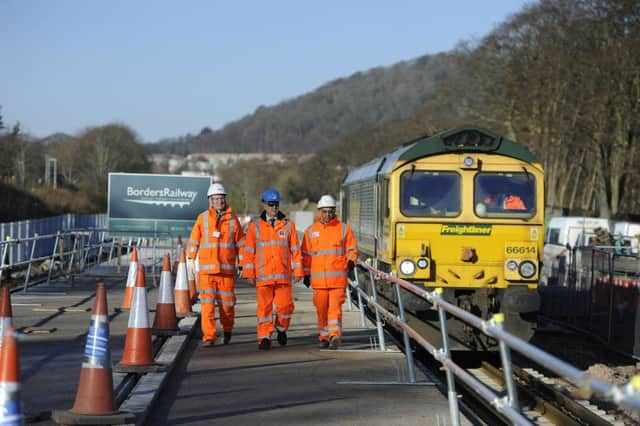Alastair Dalton: Borders Railway could set example


The re-opening of a 30-mile section of the historic Waverley route between Edinburgh and Carlisle was a leap of faith when conceived more than a decade ago – as it will serve a relatively sparsely populated area.
But with train travel now booming, the line could become a watershed, transforming what is possible for rail expansion across Scotland.
Advertisement
Hide AdAdvertisement
Hide AdFormer first minister Alex Salmond and some Network Rail chiefs have already raised the possibility of restoring the rest of the route, and it could also provide the catalyst for other long-sought re-openings.
Everything appears to be now on course for the September opening, but critics have pointed to some serious shortcomings with the project that may yet come to haunt ministers.
These stem from the delays and cost increases caused by a botched attempt by the SNP to have the line built and maintained by the private sector.
This was abandoned when bidder after bidder pulled out, as The Scotsman revealed, leaving the Scottish Government little choice but to draft in the professionals – Network Rail – which arguably should have been given the job in first place.
The £350 million project has been scaled back to save money, with the length of double track reduced so it will now cover less than one-third of the new line rather than more than half.
This will curb the number of trains which can run, with planned steam specials to celebrate the line’s opening forcing the cancellation of regular services.
There have also been – as yet unproven – fears that this lack of capacity will have a major effect on delays when there is disruption, such as a train breaking down.
That is a “when”, not “if”, because it has been decided that ScotRail’s least reliable trains – class 158 diesels – will serve the route. On the upside, at least most trains will have wi-fi, along with stations on the route.
Advertisement
Hide AdAdvertisement
Hide AdHowever, perhaps most significantly for the future, the ability to double track the rest of the line has been seriously compromised by new bridges being built with space for just one track.
At least provision has been made for future electrification.
I expect the saga to be chronicled by the line’s critical friend David Spaven, whose book Waverley Route will have a new edition, subtitled The Battle For The Borders Railway, out this month.
It may turn out to be required reading for those planning the next stage of Scotland’s rail renaissance.